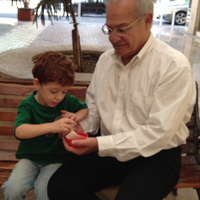
Lisa Suzuki
Related Authors
Daniel D. Hutto
University of Wollongong
Gunnar Björnsson
Stockholm University
Gastón Becerra
Universidad de Buenos Aires
Ned Block
New York University
Ezequiel Di Paolo
Ikerbasque
Jorge L Fabra-Zamora
SUNY: University at Buffalo
Michael Schmitz
University of Vienna
Andreas Demetriou
University of Nicosia
Kayhan Bolelli
Mercer University
Diego M. Papayannis
Universitat de Girona










Uploads
Papers by Lisa Suzuki